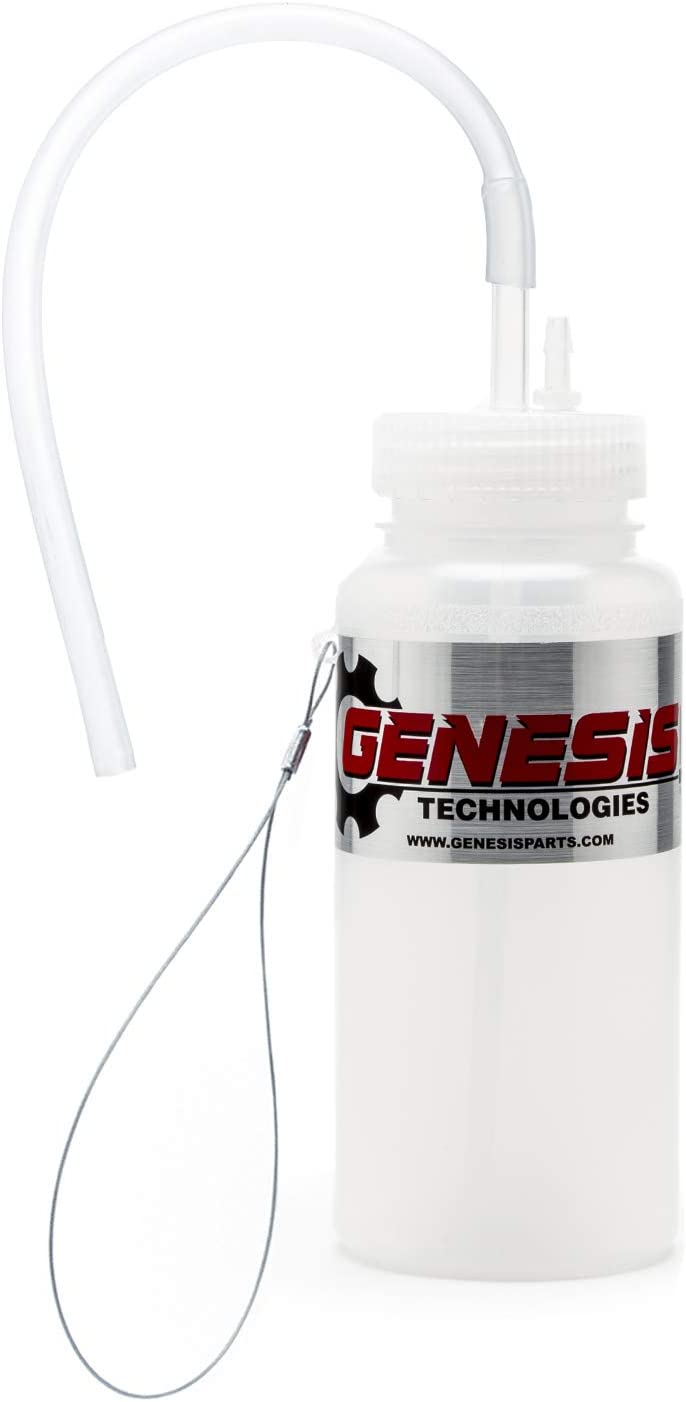So, here's the long story of how my first-ever (like, in my life) brake bleeding went.
I was going to order the power probe BA10 but they were like $50 and it seems like they may have discontinued it. Then I read the reviews on the Harbor Freight vacuum bleeder (sucks fluid out of the calipers rather than pressurizing the master cylinder):
Pneumatic Brake Fluid Bleeder with Auto-Refill Kit - https://www.harborfreight.com/brake-fluid-bleeder-92924.html . For $29 I figured why not, and the reviews were excellent. Got the car up on the jack stands and took the wheels off.
Sacrificed our turkey injector to suck as much old brake fluid out of the master cylinder as I could, and promised the wifey that I'd buy her a new one later.
Then I realized the rear bleeder nipples had received way too many ugga-duggas from He-Man or whomever bled the brakes last (which, as I'll get to in a moment, was a helluva long time ago). I have no rust on the vehicle, but those suckers wouldn't budge, I put a box end 10mm wrench on one of them (first mistake) and tapped it with a hammer to break it free. I succeeded in partially rounding the bleeder nut, then I stepped back and thought about all of the previous times that I had hurriedly tried to do something only to make it worse. Soaked it with PB blaster, came back in a couple hours, this time with a six-point 10mm deep socket. Didn't move. FSM says the torque spec on these is something like 7-8 ft-lbs so I was paranoid of snapping it off. Sprayed it with PB and quit for the day.
Came back the next day, hit it with more PB, didn't budge. Just because you can sear a steak with a blowtorch doesn't mean it isn't useful for other things. Fired that puppy up and waved it back and forth on the caliper, not the screw. Got it toasty and put more PB on it. SUCCESS! Got the bleeders open. The front ones were easy, no idea what the difference is. Oh, did I say I got the bleeders open? Well, that was kind of a lie. I kept unscrewing the RR bleeder and no fluid came out. Eventually the whole bleeder came out and rusty brake fluid dripped out of the caliper. There was no hole on the inside of the bleeder screw. I'm thinking, why did He-Man put a non-bleedable bleeder screw into this thing? I start poking around in the exterior hole with an opened paperclip and it dawned on me that the tiny hole on the inside of the bleeder screw in fact existed, but it was covered in rust. That brake fluid was so old that it absorbed enough water to create rust.
Whatever, I figured. Glad I'm changing the fluid. Or... am I? I opened the master cylinder cap and set it aside, stuck the bleeder tube on the vacuum kit on the bleeder, fired up my trusty 3-gallon pancake compressor and... let's just say it can push the 100 PSI that is required for the kit to work, for about 10 seconds. After then the vacuum dropped precipitously and the little compressor couldn't keep up. As it released the vacuum, air got into the calipers. My 10 year old compressor had met its match. Did a couple of hours of research online, drove to Lowes, said "screw it, I'm not going to buy something disappointing" and bought a 33-gallon, 110-lb compressor that barely fit into my Forester.
Back at home, with adequate pressure, the old brake fluid and rust chunks flowed neatly into the canister. I started with the back ones, went to the fronts, but went back because of all the bubbles I kept finding. I realized I was probably sucking air in through the bleeder screw threads so I tightened them down until the flow stopped, then opened them maybe 1/4 turn after that. The bubbles slowly went away.
The brake pedal feel is SO MUCH BETTER now. Bleed your brakes, guys.

